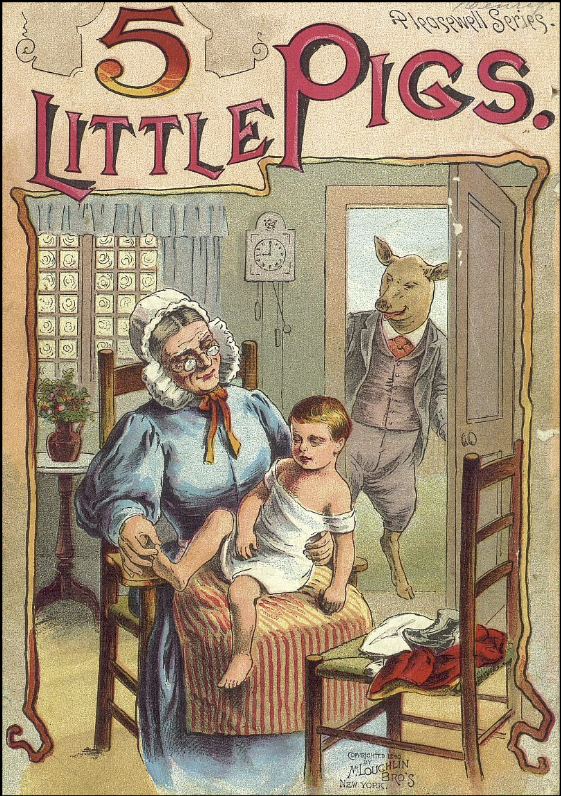
We can learn much about how a historical period viewed the abilities of its children by studying its children’s literature. Occupying a space somewhere between the purely didactic and the nonsensical, most children’s books published in the past few hundred years have attempted to find a line between the two poles, seeking a balance between entertainment and instruction. However, that line seems to move closer to one pole or another depending on the prevailing cultural sentiments of the time. And the very fact that children’s books were hardly published at all before the early 18th century tells us a lot about when and how modern ideas of childhood as a separate category of existence began.
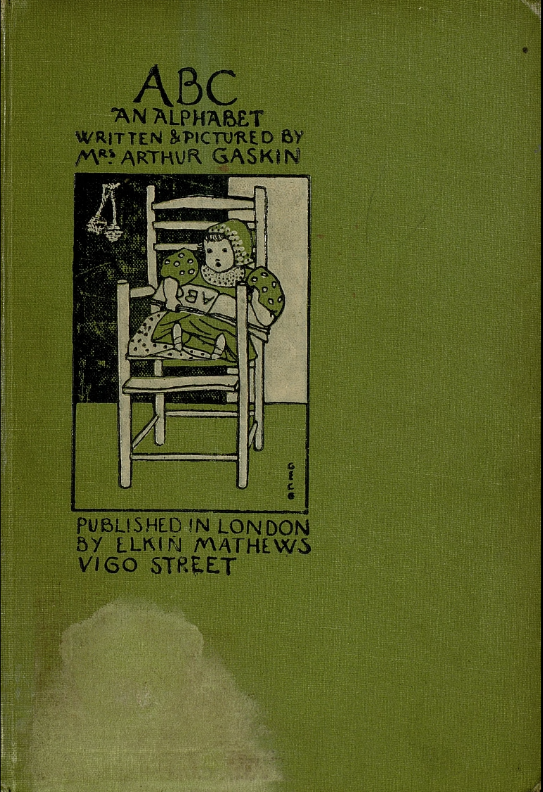
“By the end of the 18th century,” writes Newcastle University professor M.O. Grenby, “children’s literature was a flourishing, separate and secure part of the publishing industry in Britain.” The trend accelerated rapidly and has never ceased—children’s and young adult books now drive sales in publishing (with 80% of YA books bought by grown-ups for themselves).
Grenby notes that “the reasons for this sudden rise of children’s literature” and its rapid expansion into a booming market by the early 1800s “have never been fully explained.” We are free to speculate about the social and pedagogical winds that pushed this historical change.
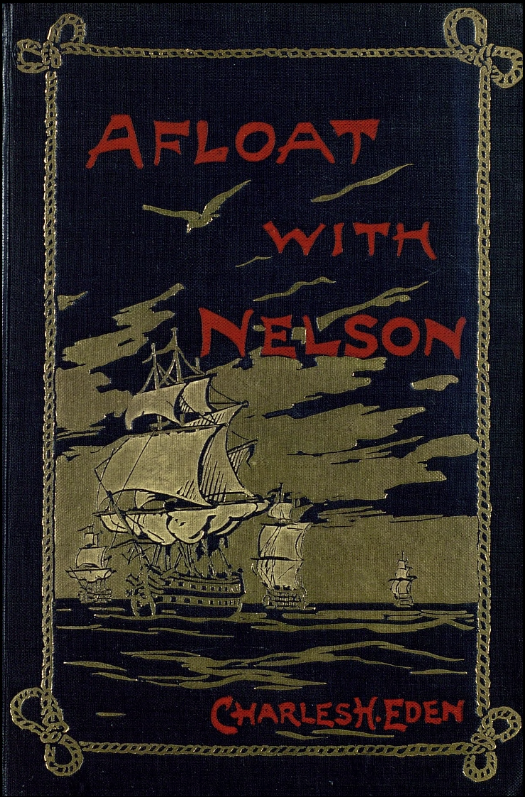
Or we might do so, at least, by examining the children’s literature of the Victorian era, perhaps the most innovative and diverse period for children’s literature thus far by the standards of the time. And we can do so most thoroughly by surveying the thousands of mid- to late 19th century titles at the University of Florida’s Baldwin Library of Historical Children’s Literature. Their digitized collection currently holds over 6,000 books free to read online from cover to cover, allowing you to get a sense of what adults in Britain and the U.S. wanted children to know and believe.
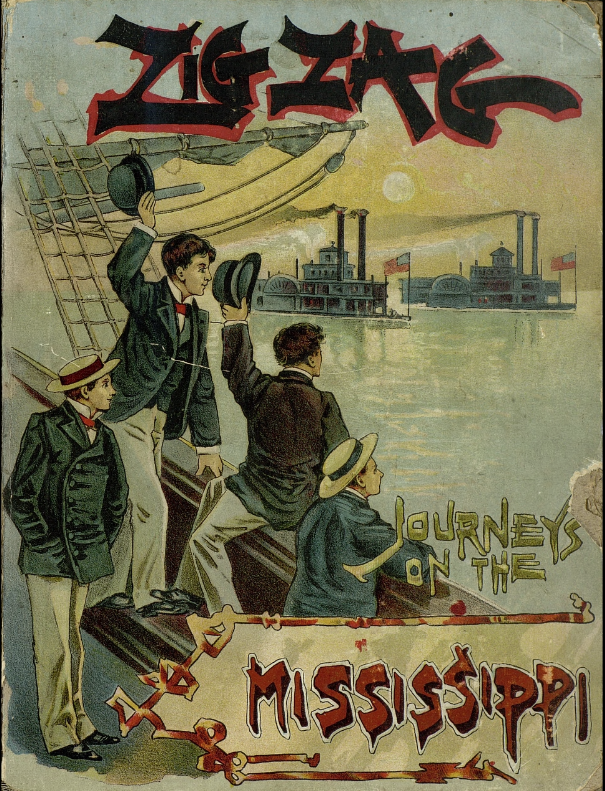
Several genres flourished at the time: religious instruction, naturally, but also language and spelling books, fairy tales, codes of conduct, and, especially, adventure stories—pre-Hardy Boys and Nancy Drew examples of what we would call young adult fiction, these published principally for boys. Adventure stories offered a (very colonialist) view of the wide world; in series like the Boston-published Zig Zag and English books like Afloat with Nelson, both from the 1890s, fact mingled with fiction, natural history and science with battle and travel accounts. But there is another distinctive strain in the children’s literature of the time, one which to us—but not necessarily to the Victorians—would seem contrary to the imperialist young adult novel.
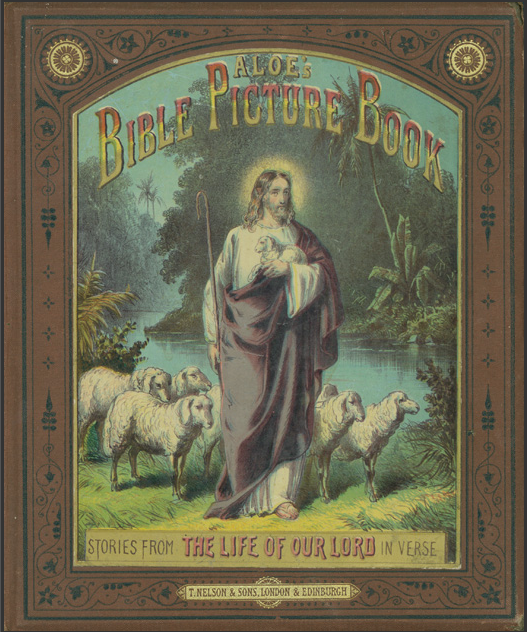
For most Victorian students and readers, poetry was a daily part of life, and it was a central instructional and storytelling form in children’s lit. The A.L.O.E.’s Bible Picture Book from 1871, above, presents “Stories from the Life of Our Lord in Verse,” written “simply for the Lord’s lambs, rhymes more readily than prose attracting the attention of children, and fastening themselves on their memories.” Children and adults regularly memorized poetry, after all. Yet after the explosion in children’s publishing the former readers were often given inferior examples of it. The author of the Bible Picture Book admits as much, begging the indulgence of older readers in the preface for “defects in my work,” given that “the verses were made for the pictures, not the pictures for the verses.”
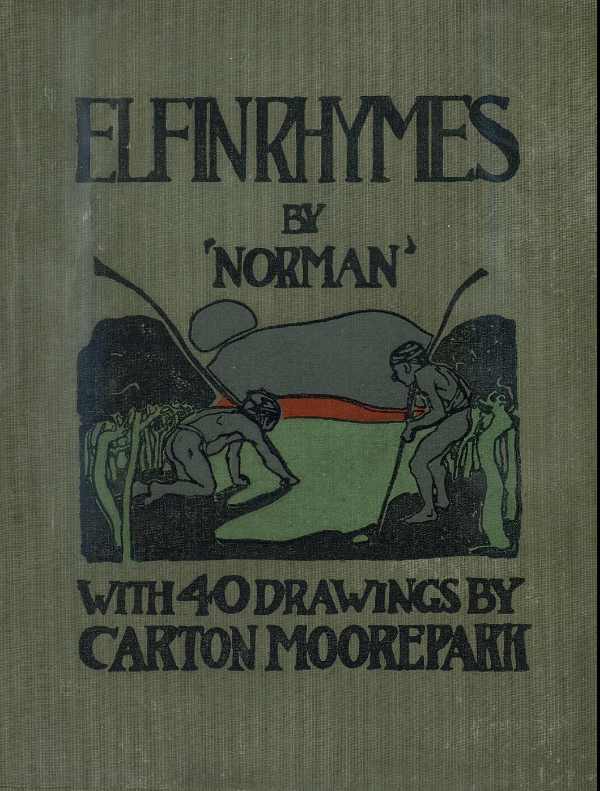
This is not an author, or perhaps a type of literature, one might suspect, that thinks highly of children’s aesthetic sensibilities. We find precisely the opposite to be the case in the wonderful Elfin Rhymes from 1900, written by the mysterious “Norman” with “40 drawings by Carton Moorepark.” Whoever “Norman” may be (or why his one-word name appears in quotation marks), he gives his readers poems that might be mistaken at first glance for unpublished Christina Rossetti verses; and Mr. Moorepark’s illustrations rival those of the finest book illustrators of the time, presaging the high quality of Caldecott Medal-winning books of later decades. Elfin Rhymes seems like a rare oddity, likely published in a small print run; the care and attention of its layout and design shows a very high opinion of its readers’ imaginative capabilities.
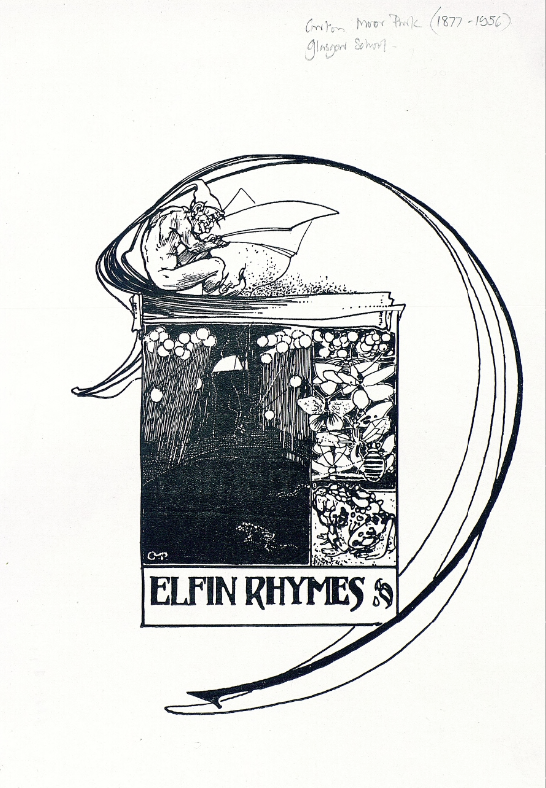
This title is representative of an emerging genre of late Victorian children’s literature, which still tended on the whole, as it does now, to fall into the trite and formulaic. Elfin Rhymes sits astride the fantasy boom at the turn of the century, heralded by hugely popular books like Frank L. Baum’s Wizard of Oz series and J.M. Barrie’s Peter Pan. These, the Harry Potters of their day, made millions of young people passionate readers of modern fairy tales, representing a slide even further away from the once quite narrow, “remorselessly instructional… or deeply pious” categories available in early writing for children, as Grenby points out.
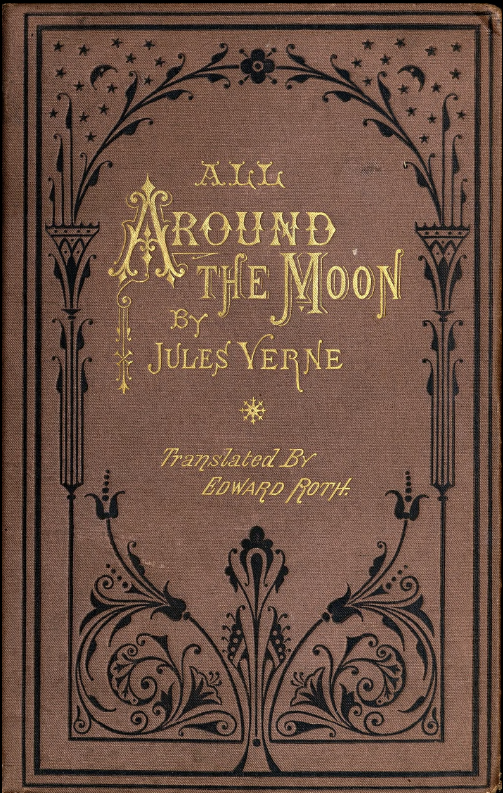
Where the boundaries for kids’ literature had once been narrowly fixed by Latin grammar books and Pilgrim’s Progress, by the end of the 19th century, the influence of science fiction like Jules Verne’s, and of popular supernatural tales and poems, prepared the ground for comic books, YA dystopias, magician fiction, and dozens of other children’s literature genres we now take for granted, or—in increasingly large numbers—we buy to read for ourselves. Enter the Baldwin Library of Historical Children’s Literature here, where you can browse several categories, search for subjects, authors, titles, etc, see full-screen, zoomable images of book covers, download XML versions, and read all of the over 6,000 books in the collection with comfortable reader views. Find more classics in our collection, 800 Free eBooks for iPad, Kindle & Other Devices.
Related Content:
The First Children’s Picture Book, 1658’s Orbis Sensualium Pictus
The Anti-Slavery Alphabet: 1846 Book Teaches Kids the ABCs of Slavery’s Evils
The International Children’s Digital Library Offers Free eBooks for Kids in Over 40 Languages
Josh Jones is a writer and musician based in Durham, NC. Follow him at @jdmagness


Great work and services to new generation!
momma like
This is a very interesting post about such important things like children’s books. I think that people frequently do not pay enough attention to the quality of books their children read. We love to talk about fiction, modern authors, but we rarely think about high-quality children’s literature. Therefore, I am grateful for the awesome opportunity to know more about history the of children’s literature.
Me gustan las obras se pueden tener en español.
Gracias
lovely
Great resource. Thank you.
What a treasure trove! Thanks for sharing this!
Awesome, wonderful and thank you
I would like to give a donation but I refuse to give out my telephone address.
wonderful. do you have any of the pookie books. Cheers Geraldine
This is AWESOME TERRIFIC!!! picture books, audio books it’s like if he was thinking of all children with special needs and without!!! Amazing
Thank you for sharing
Fabulous! Thank you. I have a number of old children’s’ books that belonged to my mother and my grandmother. I’ve brought them out for my children and grandchildren and about to be time to share with my great-granddaughter. She loves books, but still a bit rough on them. All of these are reminiscent of books that I grew up with, though none quite the same, the era, they style is there.
Trying ro find children book that I enjoyed in the late 30s and early 40s. The book was in black and white. Mine was apparently soft cover, front cover gone. Stories I remember, Androcles and the Lion, Stone Soup, Water Buffalo, The crow that stole and carried things back to his nnest. Story about a mother in trying to protect her children fom the Indians and hid them under big kettles, A story about Robert Burns. Hoping you can figure out which book I’m looking for . AnnTurner
The Turned-Into’s by Elizabeth Gordon is my favorite. It was my mother’s book which she daved for her children. The illustrations by Janet Laura Scott are exquisite. Over the years I bought three more copies for my three daughters.
Fun and memories of reading under blanket by torchlight !!!
What a treasure trove! I cannot wait to get into it!
Thanks so much for sharing—
Do you have any Holling C Holling?
Thanks for sharing
Does anybody remember a book from the 40s that was about a young girl who dress like a boy to fight in the Civil War? Is it something about sugar or daddy or sugar lips… I can’t remember the title. I read it at Landon school in Pittsburgh Pennsylvania where Miss Powers was our inspirational librarian
just wonderful
Am looking for a book that was in my family’s library when I was a child ((1940’s).
II remember two of the characters names
as “Sophie Spoil All” and “Scissor Man”
Hope you can help. Caroline
Looking for an early copy of Night Before Christmas. HARD COVER in green — I believe there was a black outline of SAnta and sleigh on the front. Bright,colorful pictures. Book is approx 3″ x 5″. Possibly published in Canada. Thank you.
Wonderful new I can see an fantastic tales and histories there thank you very much for sharing it
If it’s for the same age as Hardy Boys and Nancy Drew, and about boys and not teens, it is what we today wound call Middle Grade, not Young Adult. Young Adult genre is considered to have started with the publishing of Seventeenth Summer in 1942.
The popularity of YA fiction today is undeniable, but it’s no excuse for the number of articles written from outside the field that refer to Middle Grade and even chapter books like Ramona as YA.
Great Job!! Highly appreciated!!
Wow — these are beautiful!
Ok
Hi Caroline, if you are still monitoring this. I’m pretty sure the book you are thinking of is “Slovenly Peter,” published originally in German as “Struwwelpeter.” Note to all not familiar with this book: Although apparently it was intended to be light-hearted, I found it horrifying as a child and I still do. It’s full of grim and gory ideas and images about what happens to “bad” boys and girls. I would not let a sensitive child anywhere near it.
Its like someone left the treasure box open .…
Very interesting reading.
I would love to read these children’s books.
Thanks for the free books.
I usually type all 9’s and if that does not work, enter a phony number, if you really want to donate.
What an interesting site! I must, as a children and young adult book author myself, have a look more deeply into these books. I had many favourites myself, but ‘The Secret of the Sun God’s Cave’, a great adventure about Rak, an early man, was my most favourite. Wonderful illustrations. I would love to find it and read it again. Another favourite was the Children of the Sea, about a boy who saves a young ‘dolphin that had been bitten by a shark. ‘Lad a Dog’ by Albert Payson Terhune is another. ‘Winnie the Pooh’. So many out there.
I have a small book that teaches A B Cs, that is over a 100 years old. Would you be interested in this book. one of the pages has a black woman on it.
Me parece fenomenal esta iniciativa. Repartir cultura por todas partes.
Gracias
Education is not a leaning of facts but training to mid thik
I have my mother’s copy of Struwelpeter. I agree, it is grim.
I have not so far been able to discover how to search by author or title
Thank you
Thank you.…
Thank you!
thank you
I agree that providing high quality literature to our children is so important. What I read as child inspired me and shaped my future! This is a treasure that has been provided to us!
Thanks
hi how are you?My name’s Carmen ling and I’m eight years old.I live in Klang.I study in (SJK©Kong How)
My favourite subject in school is Art.I love badminton and swimming.I always watch television on Weekends.What’s your favourite spot and subject?Please write back soon.bye
HI,
Iam Sreeja, I am mother of 11 year old twins,all three of us are fond of reading books
This seems to be a great opportunity for my children to read quality literature.
Thank you.
We have a wonderful copy of Minn of the Mississippi for sale on Amazon. It’s signed AND inscribed by both of the Hollings, even has a Dust jacket.
Those 2 were amazing. Beautiful stories, fantastic artwork.
I think most of what they did is still in print, and there are lots of cheaper used copies available too.
I am looking for a book I had as a child about a little Indian boy and his family who came to be known as Little Buffalo and whose father was called Big Buffalo. Also pictured was his mother and baby sibling. It was beautifully illustrated and not long. Bigger than a little golden book as I remember. Have had no luck finding this book from the 40s probably .
History is that sureness created where the blemishes of memory meet the insufficiencies of documentation.
Please call
Looking for a 1930 or 1940 fictional children’s story book.
The children characters are Gilian and her younger brother Digory.
Book may be named the Very Family or The Vary house.
Thank you
Looking for a 1930 or 1940 fictional children’s story book.
The children characters are Gillian and her younger brother Digory.
Book may be named the Very Family or The Vary house.
Thank you